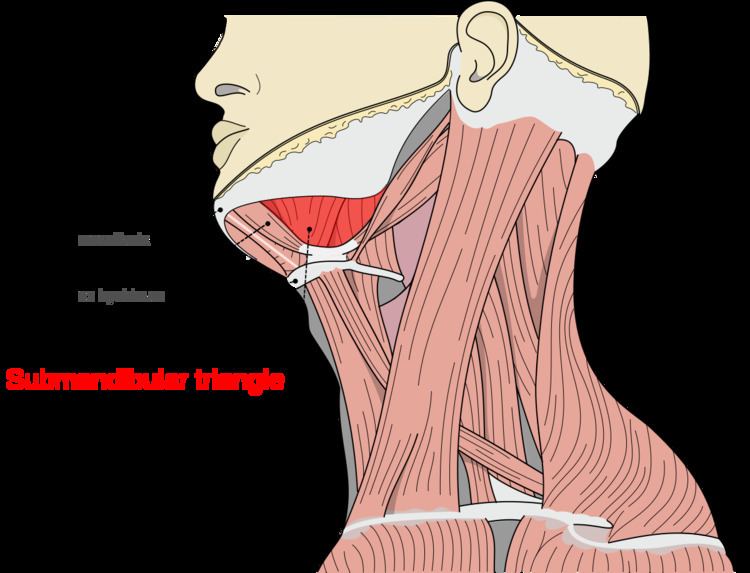Dorlands/Elsevier t_19/12823608 FMA 57779 | TA A01.2.02.003 | |
 | ||
Latin trigonum submandibulare | ||
The submandibular triangle (or submaxillary or digastric triangle) corresponds to the region of the neck immediately beneath the body of the mandible.
Contents
Boundaries and coverings
It is bounded:
It is covered by the integument, superficial fascia, Platysma, and deep fascia, ramifying in which are branches of the facial nerve and ascending filaments of the cutaneous cervical nerve.
Its floor is formed by the Mylohyoideus anteriorly, and by the hyoglossus posteriorly.
Triangles
Divisions
It is divided into an anterior and a posterior part by the stylomandibular ligament.
Anterior part
The anterior part contains the submandibular gland, superficial to which is the anterior facial vein, while imbedded in the gland is the facial artery and its glandular branches.
Beneath the gland, on the surface of the Mylohyoideus, are the submental artery and the mylohyoid artery and nerve.
Posterior part
The posterior part of this triangle contains the external carotid artery, ascending deeply in the substance of the parotid gland
This vessel lies here in front of, and superficial to, the external carotid, being crossed by the facial nerve, and gives off in its course the posterior auricular, superficial temporal, and internal maxillary branches: more deeply are the internal carotid, the internal jugular vein, and the vagus nerve, separated from the external carotid by the Styloglossus and Stylopharyngeus, and the hypoglossal nerve
Summary of contents
The following summarizes the important structures found in the submandibular triangle:
